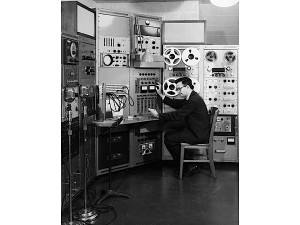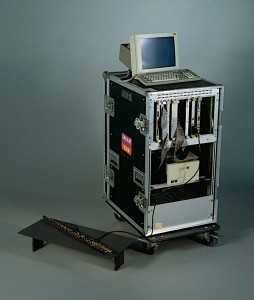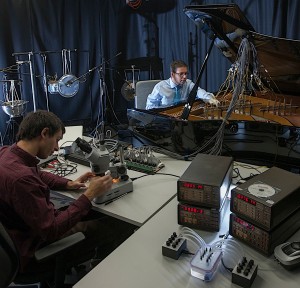BY EDUARDO R. MIRANDA
Classical contemporary music may not always appeal to large audiences but it can most certainly impact on how music that is more amenable to mass consumption is made.
The Beatles, for instance, are known for admiring the music of, and being influenced by, the highly innovative German composer Karlheinz Stockhausen. They even put Stockhausen’s picture on the cover of their famous Sgt. Pepper’s album.
Over the course of the last 70 years or so, computers have played a pivotal part in the development of the music industry. And classical contemporary music composers, who were interested in exploring the potential of computing technology for their métier, played an important role in these developments.
This trend will most certainly continue to flourish. Classical computer music, a genre of classical music where computing technology plays an important role in composition or performance, or both, is now firmly established.
The first grand milestone of classical computer music took place in 1957 at University of Illinois at Urbana-Champaign, USA, with the composition Illiac Suite by Lejaren Hiller (Photo 1). Hiller, then a professor of chemistry, collaborated with mathematician Leonard Isaacson to program the ILLIAC machine to compose a string quartet.
ILLIAC, short for Illinois Automatic Computer, was one the first computers ever built, comprising thousands of vacuum tubes, or valves. Hiller transcribed manually the outcomes from the machine’s calculations onto a musical score for string quartet.

Various important inventions and developments took place since, notably the invention of the transistor and subsequently the development of the microchip. The microchip enabled the manufacturing of computers that became progressively more accessible to a wider sector of the population, including, of course, composers.
The second grand milestone took place in the early 1980s at IRCAM in Paris, with Répons, an unprecedented composition by the celebrated French composer Pierre Boulez. IRCAM is a renowned centre for research into music and technology founded in 1977 by Boulez himself.
Répons, for chamber orchestra and six solo percussionists, was the first significant piece of classical music to use digital computing technology to perform live on stage: the machine ‘listened’ to the soloists and synthesized audible responses on the spot, during performance.
In order to achieve this Boulez used a pioneering computer music system, called 4X System (Photo 2), developed at IRCAM by Italian physicist Giuseppe Di Giugno and his team.

Répons and the 4X System represent the beginning of an era of increasingly widespread use of digital computers to perform live on stage together with musicians. Indeed, they mark the beginning of our present time, were personal computers, laptops, notebooks, tablets and even smart phones are used in musical composition and performance.
What is next? It is extremely likely that new developments in computing technology will continue influencing the music industry. Plymouth University’s Interdisciplinary Centre for Computer Music Research, or ICCMR, is pioneering the development of biocomputing technology for music.
Biocomputers are machines that use components made with organic living material. We developed an experimental interactive musical biocomputer, which uses organic processors made with a slime mould called Physarum polycephalum. We are researching ways to harness the molecular make up of this organism to store and process information.

The 10th Peninsula Arts Contemporary Music Festival, which took place in February 2015, saw the premiere of my composition Biocomputer Music, which to the best of my knowledge is the first ever piece of music composed using a biocomputer.
Earlier this year I composed a new piece, Biocomputer Rhythms, which uses the latest version of our interactive musical biocomputer. The new system uses improved bio-processors developed by ICCMR’s PhD student Edward Braund.
For Biocomputer Rhythms, the biocomputer is set up to listen to the piano and generate responses in real-time, which are played back on the performer’s piano and various metal percussion instruments through electromagnets that set the strings and the percussion into vibration (Photo 3).
Might it be possible that the third grand milestone of classical computer music is taking place right now here in Plymouth? I dare to think so, but only time will tell.
A short documentary about Biocomputer Rhythms is available here.

About the author:
Eduardo Miranda is Professor of Computer Music and Head of the Interdisciplinary Centre for Computer Music Research (ICCMR) at Plymouth University. His music has won prizes and has been performed in concerts and festivals worldwide and his books include Guide to Brain-Computer Music Interfacing (Springer, 2012, co-edited), Computer Sound Design: Synthesis Techniques and Programming (Elsevier Focal Press, 2002, 2nd Edition) and New Digital Musical Instruments: Control and Interaction Beyond the Keyboard (A-R Editions, 2006, co-authored).

